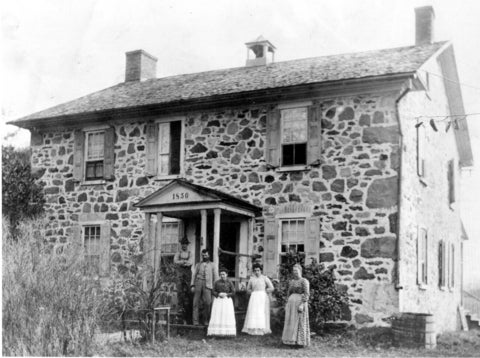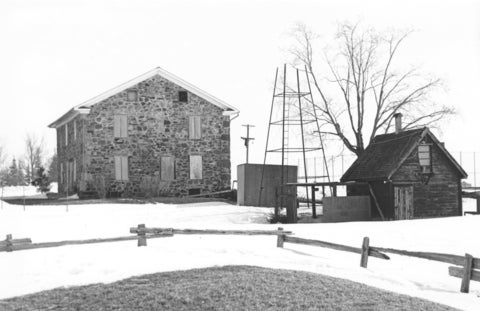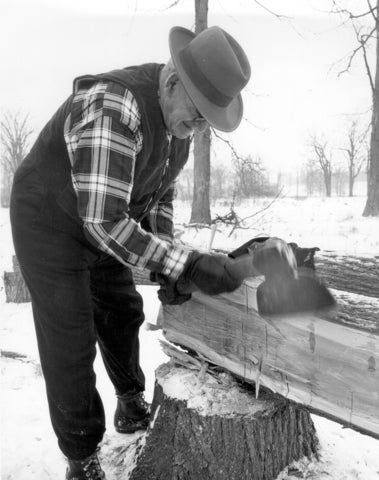
Brubacher House history
Brubacher House was built in 1850 in a style typical of Pennsylvania German architecture. In this beautiful setting on the side of a gentle hill, Magdalena and John E. Brubacher raised fourteen children. Farming continued on the land until 1965 when the property was purchased as part of the University of Waterloo.
The University of Waterloo proposed to preserve and restore one of the original farm homes on the campus in recognition of the Pennsylvania German culture which was represented on the farmlands it purchased, and as a reminder that the total 1,000 acres of the university campus was once owned by Mennonites and devoted to agriculture.
Photo credit: Mennonite Archives of Ontario

Photo credit: Mennonite Archives of Ontario
Rebuilding Brubacher House
Before restoration could take place, the house was gutted by fire. However, plans for restoration continued with involvement and planning by the University of Waterloo and the Mennonite Historical Society of Ontario, Conrad Grebel University College and the Waterloo Regional Heritage Foundation.
Under the direction of Simeon Martin, a master Mennonite craftsman, and with the assistance of many Mennonite farmers, the house interior was rebuilt to reflect a Pennsylvania German Mennonite home of the 1850-90 period. The furnishings are an authentic reflection of the time period, many of them having been collected from area Mennonite families.

Photo credited to: David L. Hunsberger/Mennonite Archives of Ontario

Brubacher House today
In 1979, the house opened as a museum, and today the beautifully preserved home has become a landmark overlooking Columbia Lake and the University of Waterloo playing fields. The strong simple architectural lines of a past era contrast the modern lines of buildings on campus. In 2019, Brubacher House was identified as a significant Cultural Heritage Landscape in Waterloo.